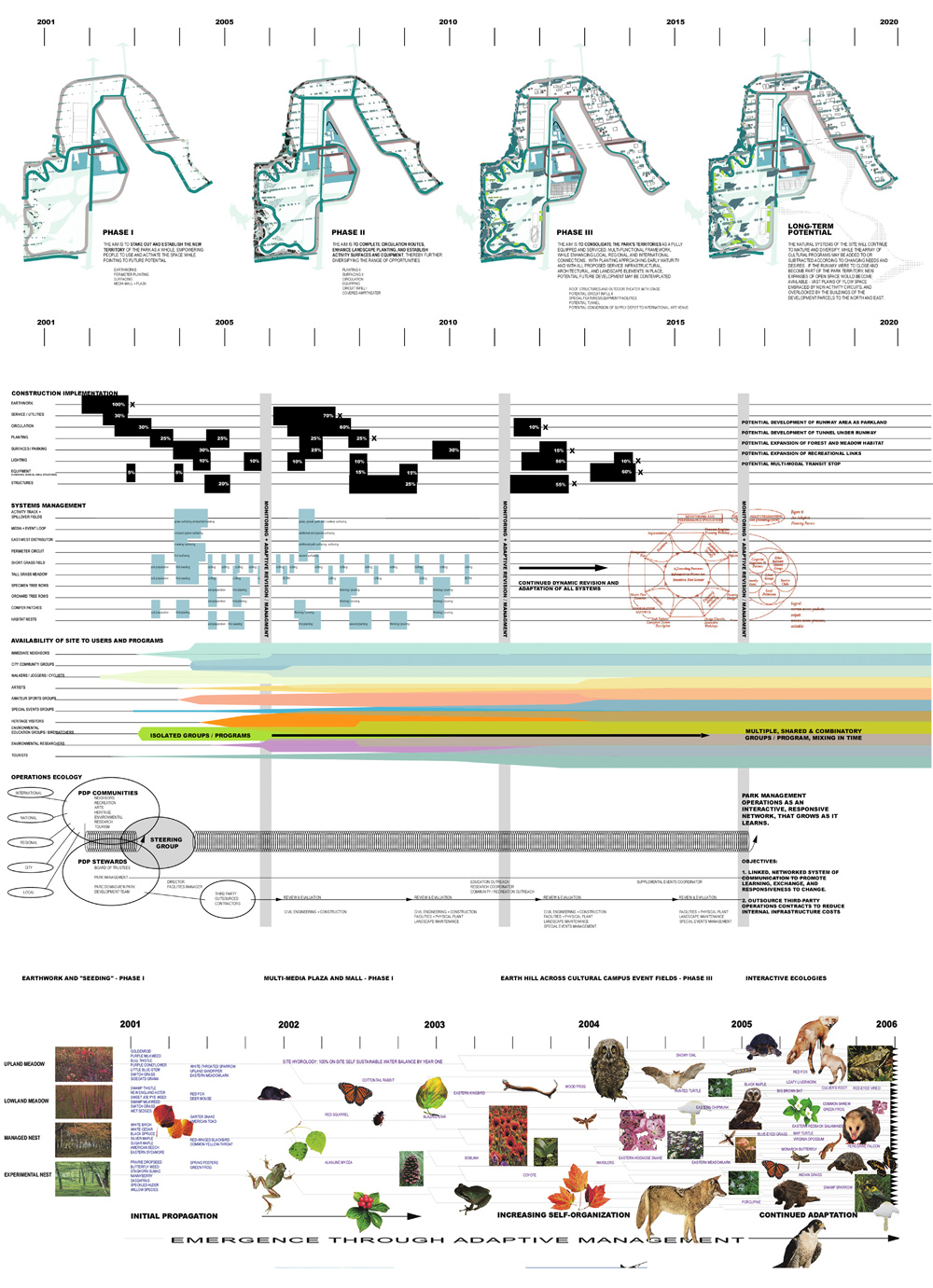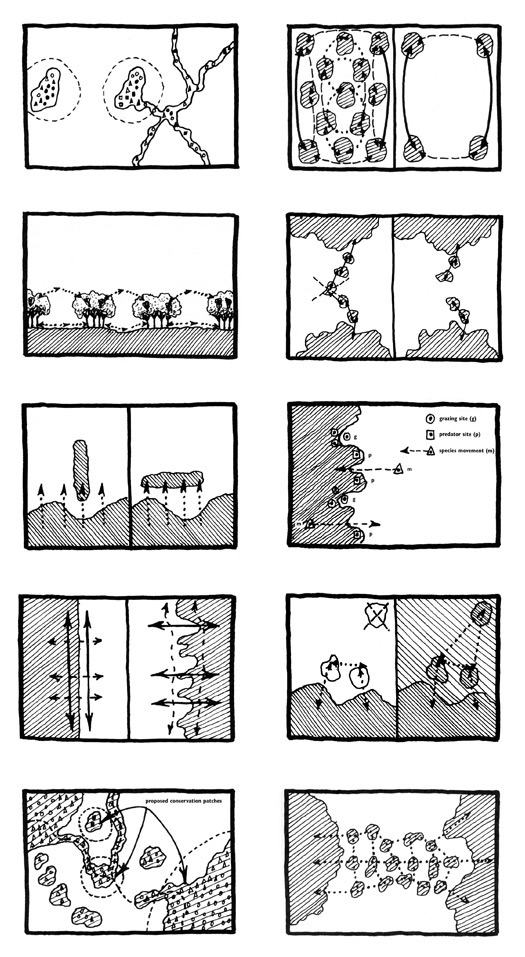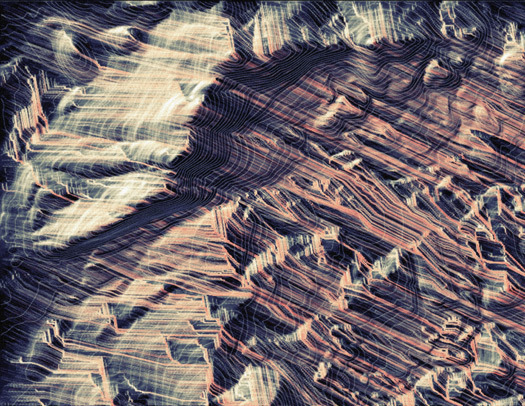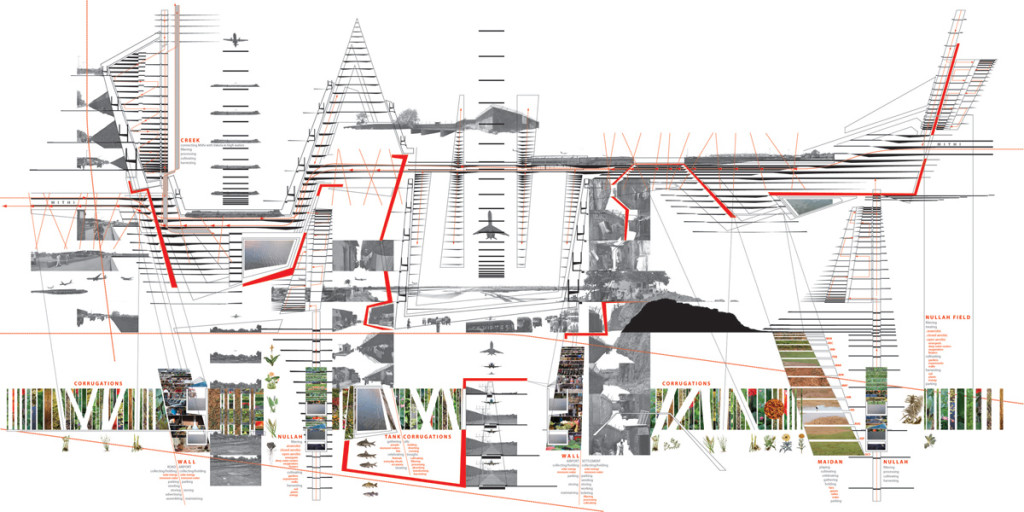As mentioned, it would be worth while to explore some essays of the Projective Ecologies book, and what better way to start than with the introductory essay by Reed and Lister, Parallel Genealogies.
The terms ‘ecologies’ and ‘ecosystems’ are co-opted for a variety of uses today beyond event these, which could lead to the eye-rolling misappropriation and leave us scrambling for a different term. The word/concept is by nature cool. It sounds cool, it’s integrative and connective, holistic and systemic, so of course it will be integrated into the lexicon to describe such things as media ecosystems, startup ecosystems, digital ecosystems, and others, predominately in the tech world. Our gut reaction is to say ugh and come up with something new – resilience, regenerative, biophilic, etc. that hasn’t been corrupted, but ecology, in the true sense and applicablility, is still a valid construct. I say rather than abandon it, we take it back.
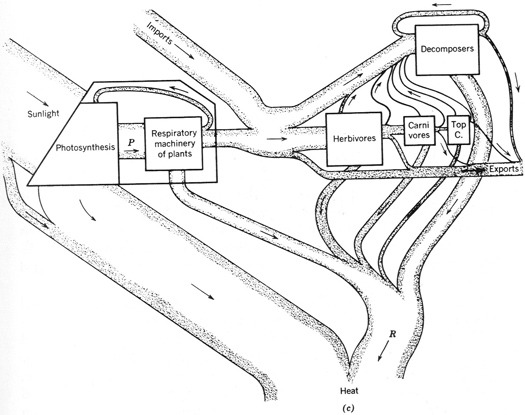
The parallel genealogies of the title are woven around ecology, and the interconnections between the natural sciences, the humanities and design. These are broken down in turn, evolving the concepts from scientific roots of ecosystem and population ecology, through the connections of ecology to environmentalism which has led to it’s more popular usage. The crux is a shift from, linear, deterministic ‘climax’ models to more of a focus on “open-endedness, flexibility, resilience, and adaptation… ecosystems are now understood to be open systems and behave in ways that are self-organizing and that are to some extend unpredictable. ” In that vein (25):
“…change is built into living systems; they are characterized in part by uncertainty and dynamism.”
This makes it more difficult to understand, but infinitely more interesting, as things change and move in systems, leading to conceptual metaphors like mosaics which are compelling to scientists and lay-people (especially designers). The application of ecological principles – beyond mere observation – implies the agency of humans, thus making our impacts become impossible to ignore. We also tend to want to act in healing degraded areas, which requires sufficient data to make the correct course corrections.
Do we possess, or can we possess, adequate information to counterbalance the human-impacted changes in climate that have (Katrina, Sandy) and will influence millions? We can’t not act, but with what information and certainty? As the authors point out, the concept shifts “toward complex system thinking is to realize that we cannot manage whole ecosystems; rather, we can manage ourselves and our activities… [which] will have profound implications for the way we design.” (27)
The second genealogy focuses on the humanities (which i would maybe broaden to include many social elements) in solidifying our connections to the natural world. Similar to deterministic linear ecological models, the way we live and govern ourselves, as in the text, quoting Botkin: “our management practices must adapt themselves to this new scientific understanding of the world – that principles of order, control, and limits will eventually doom the very things we want to protect.” (29)
Our connection to nature, or the wild, is slipping somewhat in an age of hypercommunication and technological fascination, which is maybe an extension of our overcoming the fear of the wild by naming, and then taming what we once feared. Or maybe we just stare at phones too much. In perhaps a counterargument to the naming of places, is the idea of experience, as argued by Neil Evernden, in The Social Creation of Nature’ where “…he argues for qualities, as opposed to nameable things, that might describe that which exists beyond human control.” (30)
“Wildness is not ‘ours’ — indeed, it is the one that that can never be ours. It is self-willed, independent, and indifferent to our dictates and judgements. An entity with the quality of wildness is its own, and no others’s”
And finally with design, and the historical origins of ecological planning traced in the modern sense to McHarg in the 1960s (but built on many, many others before him). The quantitative as a design strategy was, and indeed still is, somewhat of a foreign concept, that has weathered the art v. science debates, but did galvanize a concept of designing with nature that still evokes joy when spoken aloud. The language of the ecological – still vivid today – evokes visions that easily spur design intention. R.T.T. Forman gave a new language to landscape architects, thinking about “matrices, webs, and networks… characterized by adjacencies, overlaps, and juxtapositions.” This took us beyond the simple overlay into the concept of change and flux, or as mentioned “Adaptation, appropriation, and flexibility, which became understood as the hallmarks of ‘successful’ systems.” (33)
The examples start to emerge, with no perfect exemplar but many worth studying for elements or processes worthy of emulation. The work of Haag, Hargreaves, and numerous earthwork artists used the armature, language and symbolism of nature into works, and also left (gasp) things unfinished somewhat, with slight references to indeterminacy, which dovetailed so well into the best aspects of landscape urbanism theory. Thus the spatial fields of Koolhaas/OMA at Parc de la Vilette, or the work of Desvigne and Dalnoky, which “set out strategies in which growth, succession, and careful editing of newly planted urban or industrial forests could be seen to reintroduce environmental dynamics into sites and projects that had erased – or at least significantly dampened – ecological effects.” (36)
It’s not a hands-off ecological succession, but strategic ‘curation’ that works for the ecological and the cultural, and the binary notion of nature and human. This led nicely into works by Allen, Corner, and further competitions such as Downsview Park, Freshkills Landfill, and others to solidify an interdisciplinary, graphically rich, and temporally based approach to landscape architecture. While the framing of it and subsequent labeling as landscape urbanism may have not stuck in it’s original sense, the literature of LU is the best that’s come out of the profession in a decade. My opinion is the book we’re reading is the next iteration (or maybe continuation) of that concept.
Beyond the theoretical, the shift toward application of these projects (not just competitions but works being built) offers a validation of the action-oriented approach that connects ecology, humanity, and design in ways that have rarely been accomplished. New approaches, ecological awareness, understanding of hybrid and novel ecosystems, the role and result of humans as parts of these system – coupled with new technology – leads to a new urban ecological paradigm. The book, and this first essay, continues the conversation, “toward a more rigorous, robust, and relevant engagement across the domains of ecology and design – one to be fully explored in the coming years.” (38)
I’ll probably skip next the Corner essay as it has been covered extensively (but feel free to comment or guest post welcome!) – and jump to Hight’s essay on Designing Ecologies. Stay tuned and comment on your thoughts on this essay below.
